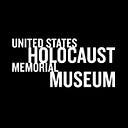The Bombing of Auschwitz Question
By Sara J. Bloomfield
The question of whether the US government could have or should have bombed Auschwitz- Birkenau or the railroad lines leading to the killing center has long been a topic of debate among Holocaust survivors, scholars and others for understandable reasons.
As shown in the United States Holocaust Memorial Museum’s new exhibition Americans and the Holocaust, the US government’s record on responding to the Holocaust is not a good one. We could have done much more to help the endangered Jews: publicizing the persecution and murder of the Jews; letting many more refugees in and urging other countries to do so as well; and supporting rescue and resistance efforts. These interventions could have saved many lives, and it is possible that the bombing of Auschwitz could have too. But people sometimes think that if we had bombed Auschwitz, we could have prevented the Holocaust, often forgetting that the vast majority of the killing happened very fast and very far east. By the time American forces were in a military position to do so, when Allied troops landed in Italy in September 1943, almost 4 million Jews had been killed.
To consider this question, a bit of background is necessary. A central finding of our new exhibition is that our government — and the American people — had information about the persecution and murder of the Jews while they were happening. The US government knew about the mass executions of eastern European Jews almost as soon as they began in June 1941 with the German invasion of the Soviet Union. When America entered the war in December 1941 after the attack on Pearl Harbor, 1.1 million Jews had been killed. The following summer, in August 1942, our government learned about the Nazis’ plan to murder every Jew in Europe. But the State Department initially called the reports “unreliable war rumors.” Confirmation of the veracity of the reports had little effect: the State Department instructed its staff in neutral Switzerland, an important source of information, to stop sending reports about the murder of the Jews, hoping this would reduce pressure on the US government to take action. The pressure was coming from sources such as the World Jewish Congress, activists like Peter Bergson, and the Polish resistance official Jan Karski. They had little effect.
When officials at the Treasury Department discovered that the State Department’s efforts to suppress information and keep refugees out, they prepared a report declaring that the State Department was “guilty of …willful failure to act” and the “acquiescence of this government in the murder of the Jews.” Treasury Secretary Henry Morgenthau took the report to President Roosevelt who issued an executive order creating the War Refugee Board (WRB) in January 1944.
The WRB recognized the opportunity to save the one large, remaining intact Jewish community in Nazi-dominated Europe — the Hungarian Jews. Between May 15 and July 9, 1944, a total of 437,402 Jews were deported from Hungary. Most were sent to Auschwitz-Birkenau. On some days the Nazis gassed as many as 10,000 people.
The World Jewish Congress and the WRB forwarded requests to bomb Auschwitz to the War Department (now the Defense Department). These requests were repeatedly denied. On August 14, John J. McCloy, Assistant Secretary of War, advised the World Jewish Congress that:
such an operation could be executed only by the diversion of considerable air support…now engaged in decisive operations elsewhere and would in any case be of such doubtful efficacy that it would not warrant the use of our resources.
Yet within a week, the US Army Air Force carried out a heavy bombing of the I.G. Farben synthetic oil and rubber works at Auschwitz III — less than five miles from Auschwitz-Birkenau. The gas chambers were not a US military target.
Well before the deportations from Hungary, the War Department had essentially ruled out using military personnel in rescue missions. Their officials argued that the most effective relief for Nazi victims was to end the war. Even though bombing Auschwitz was militarily feasible, US policy was always about winning the war. Saving Jews was never a priority.
For the prisoners at Auschwitz, the bombs dropping nearby gave hope. Holocaust survivor Elie Wiesel recalled:
We were no longer afraid of death; at any rate, not of that death. Every bomb that exploded filled us with joy and gave us new confidence in life.
Might the bombing have created many unwanted deaths? Of course. Would it have ended the killing? We will never know. Should we have done it? Yes. It would have been an important moral gesture to the victims and the perpetrators that Americans knew and Americans cared. Throughout the Holocaust our government knew a great deal and could have cared a lot more.
Sara J. Bloomfield is the director of the United States Holocaust Memorial Museum
